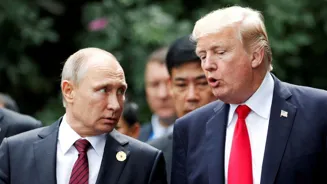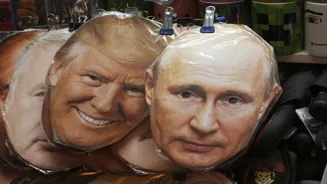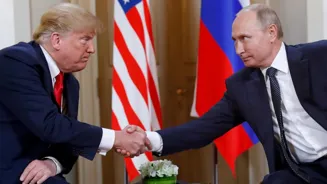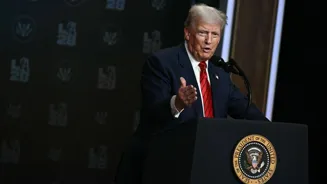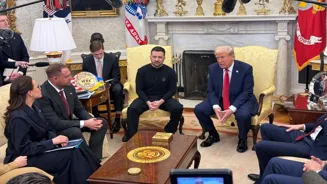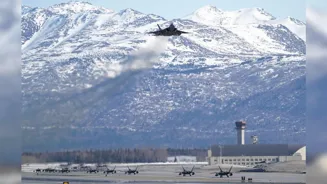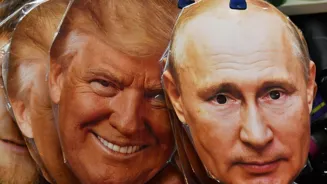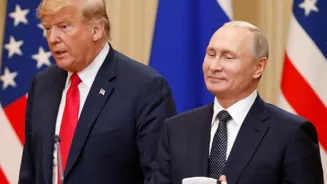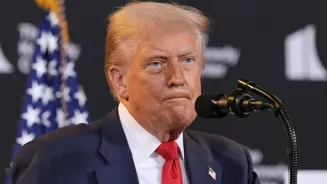What is the story about?
If you consider the history of Donald Trump’s public relationship with Vladimir Putin, you won’t be surprised that there’s a fair amount of concern in Ukraine and among Ukraine’s European allies at what might happen when the two meet in
While it’ll be their first face-to-face meeting of Trump’s second presidency, the pair has met previously on six occasions and, as we know, spoken fairly frequently over the phone.
The first face-to-face meeting was at the G20 summit in Hamburg in 2017, just months into Trump’s first term. The pair spent two hours of a scheduled 35-minute meeting talking about all things from Syria to North Korea. It was
They enjoyed a brief
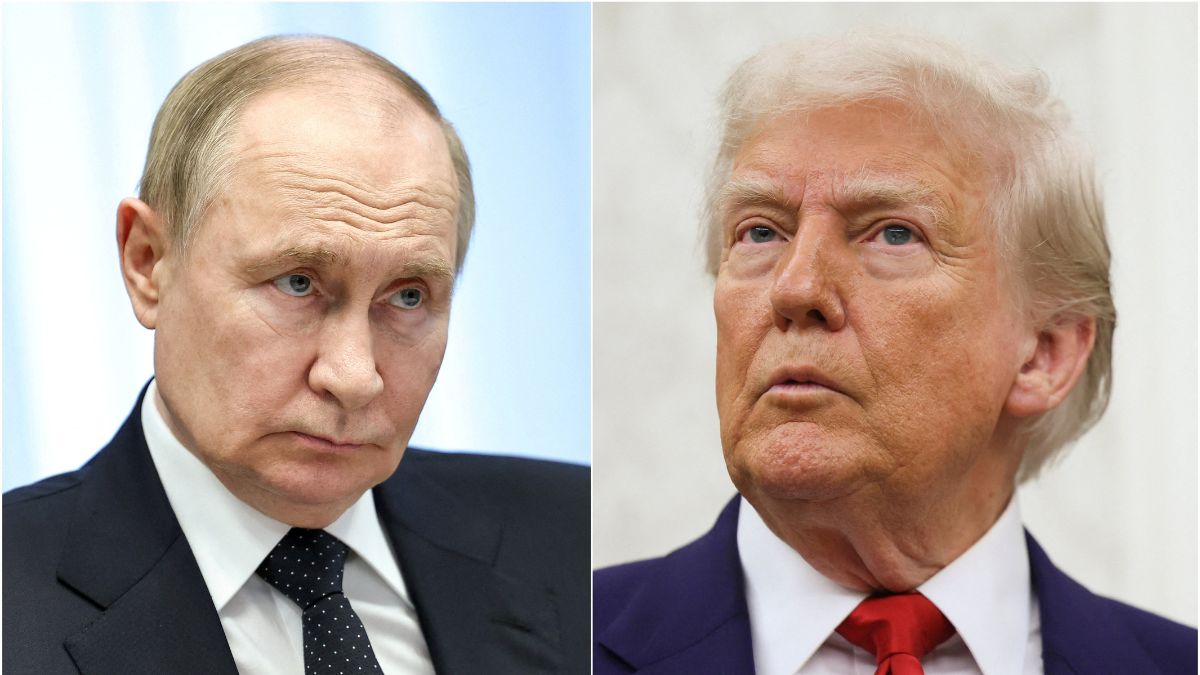
The first face-to-face meeting between Trump and Putin was at the G20 summit in Hamburg in 2017. Reuters/File
Photo
The following year they met for the now notorious summit in Helsinki, where Putin denied US intelligence reports that Russia had interfered in the 2016 election and Trump said he had no reason to doubt Putin’s word. The two spent two
There was a brief exchange at the G20
As a result, as Stefan Wolff puts in, “expectations are low and anxieties are high”in the run-up to the
The Ukrainian president won’t be there, of course. But he has already said that he won’t accept a deal which imposes a giveaway of Ukrainian territory (which would, in any case, violate his country’s constitution). Wolff
On the other hand is the possibility that Trump will persuade Putin to agree
These are clearly all concerns shared by Ukraine’s European
The main worry, writes Michelle Bentley, a professor of international relations at Royal Holloway University of London, will be that while Putin’s position
Trump, by contrast, wants to do a deal. Partly because he has said he will do one. And partly because there is economic benefit to be had for the US in repairing
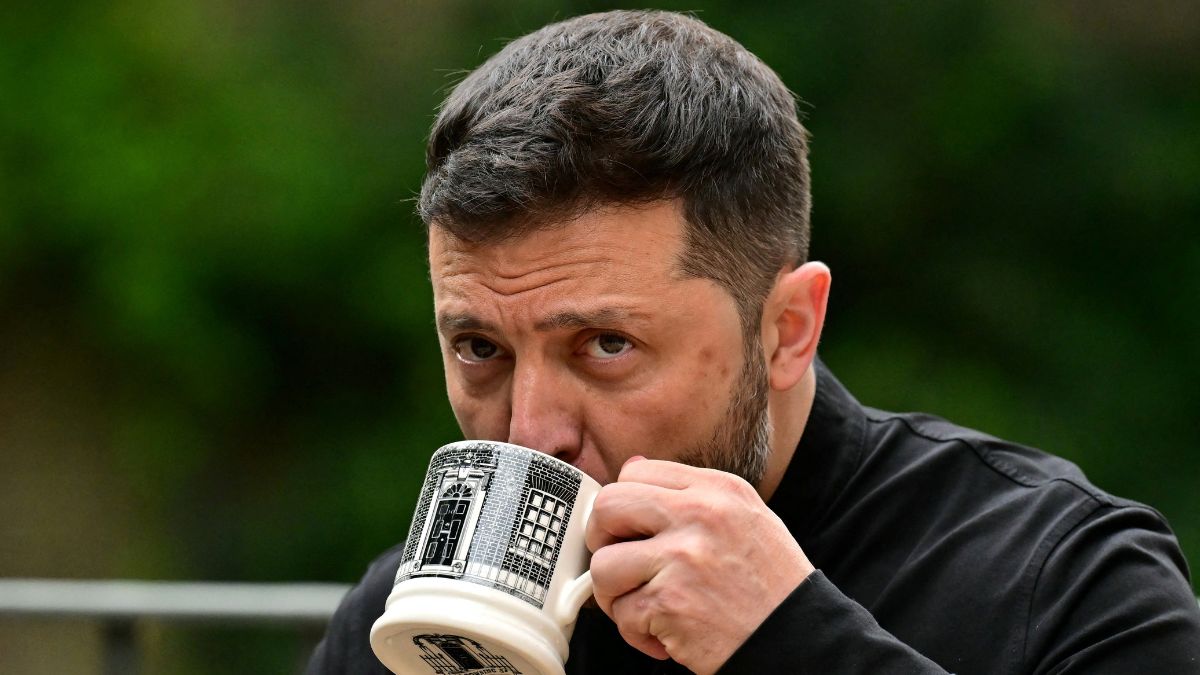
There is a possibility that Trump will persuade Putin to agree to a three-way with Zelensky, but without other European leaders. Reuters/File Photo
What to expect?
What will also be worrying Kyiv and its allies is Trump’s singular foreign policy style, which is notably transactional. It may be the US president’s background in real estate asserting itself (and it’s no coincidence that his envoy to Russia and at times to the Israeli-Palestinian conflict, Steve Witkoff, is from a similar background).
Just recently, Trump hosted the leaders of Armenia and Azerbaijan in the Oval Office for a meeting at which they signed a deal to end the decades of conflict between their two countries. Integral to the deal is the development of a new corridor through Armenia to link Azerbaijan with its enclave of Nakhchivan. Previously known as the Zangezur corridor, the link will have the name the Trump Route for International Peace and Prosperity.
Trump is by no means the first US president to link commerce or economic
Foreign governments, meanwhile, are first learning that such sweeteners can be effective in dealing with this administration. As is flattery. So it’s notable that, following Trump’s warning to Putin
Trump has made a big fuss about Putin coming to see him in Alaska, a US state. He sees that as courtesy on the part of the Russian leader. But there are many who think holding the summit in a territory that one belonged to Russia means the whole meeting has a subtext that territorial sovereignty is not absolute and that it does change hands from time to time. Here’s a brief history of Alaska from William L. Iggiagruk Hensley of the University of Alaska Anchorage, a former member of the state legislature.
Munich Agreement of 1938
A major international summit, where an aggressor is threatening to invade another country with the prospect of a major European war? We’ve been here before. The summit was at Munich in September 1938, the aggressor was Germany and the country at threat was Czechoslovakia. And like the impending Alaska summit where Ukraine has not been invited, when the British and French leaders visited Adolf
The example of Munich 1938 doesn’t fill one with a great deal of confidence for Ukraine’s future security, writes Tim Luckhurst, a historian of the second world war.
Luckhurst recounts the events leading up to Munich, at which British prime minister, Neville Chamberlain, and his French counterpart, Édouard Daladier, agreed that Germany would be allowed to annex the Sudetenland region of Czechoslovakia, with no involvement of the Czech leader, Edvard Beneš.
It would be “peace in our time”, boasted Chamberlain. It wasn’t even peace for a year.
What's happening in Israel?
To Israel, where this weekend there is likely to be one of the biggest mass protests and general strikes in the country’s history on Sunday, August 17. Huge numbers of people are expected to turn out in protest at the Netanyahu government’s failure to secure the release of the remaining October 7 hostages and the prime minister’s plan to launch a fresh offensive to take and occupy Gaza city despite the risk to the remaining hostages’ lives.
Benjamin Netanyahu’s position as prime minister is looking far from secure. The next election is due in October 2026, but John Strawson – an expert in Israeli politics at the University of East London – believes a new poll may be held much sooner than that.
Netanyahu’s parliamentary coalition is becoming more shaky as his ultra-orthodox supporters quit the government in protest at the government’s decision to scrap the exemption from conscription enjoyed by orthodox Israeli students.
But
Jonathan Este, Senior International Affairs Editor, Associate Editor, The Conversation
This article is republished from The Conversation under a Creative Commons license. Read the original article.
Do you find this article useful?
